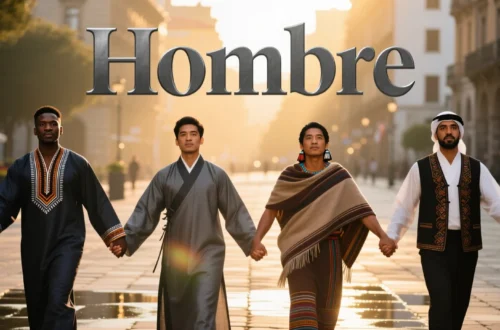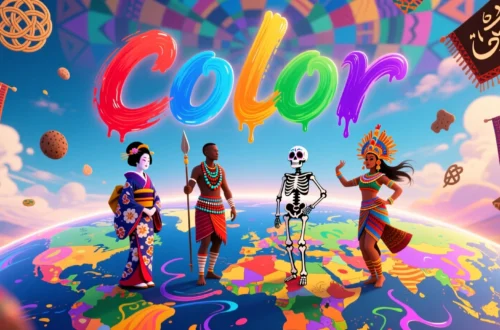As a child, I remember Mrs. Alvarez, my teacher, greeting us with a warm smile and saying, “Let’s discover something new today!” Her gentle Spanish accent made those words magical, igniting my curiosity. That moment taught me that teachers, no matter where they are, share a universal role: guiding us toward knowledge and growth. So, how do cultures around the world express the word “teacher”? Let’s explore this term across languages, uncovering unique cultural perspectives while celebrating the shared bond of learning that connects us all.
Reference Table: “Teacher” in 15 Languages
| Language | Word for “Teacher” | Cultural/Linguistic Insight |
|---|---|---|
| Spanish | Maestro/Maestra | Used for both teachers and skilled artisans, showing deep respect for expertise. |
| French | Enseignant/Professeur | “Enseignant” focuses on teaching, while “professeur” is formal, used in higher education. |
| German | Lehrer/Lehrerin | Gender-specific terms mirror Germany’s structured approach to language and education. |
| Italian | Insegnante | Comes from “insegnare” (to teach), reflecting Italy’s warm, community-focused classrooms. |
| Mandarin | Lǎoshī | Means “old master,” a respectful term rooted in Confucian reverence for wisdom. |
| Hindi | Adhyapak/Guru | “Guru” implies a spiritual mentor, tied to India’s ancient tradition of deep learning. |
| Japanese | Sensei | Applies to teachers and experts, showing Japan’s high regard for mastery in any field. |
| Korean | Seonsaengnim | A formal term reflecting Korea’s Confucian respect for educators as moral guides. |
| Arabic | Mu‘allim/Mu‘allima | Linked to knowledge transmission, used in both schools and religious settings. |
| Swahili | Mwalimu | A respected title, famously tied to Tanzania’s first president, a teacher by trade. |
| Zulu | Uthisha | Highlights the teacher’s role in guiding youth within tight-knit communities. |
| Yoruba | Olùkọ́ | Reflects the teacher as a keeper of cultural wisdom in Nigeria’s oral traditions. |
| Maori | Kaiako | Emphasizes facilitating learning, especially for passing down Maori cultural practices. |
| Hawaiian | Kumu | Means “source,” showing the teacher as the root of knowledge in Hawaiian culture. |
| Cherokee | Digalohisdi | Tied to instruction through storytelling, central to Cherokee oral heritage. |
European Languages: A Blend of Tradition and Structure
Across Europe, the word for “teacher” reflects both diversity and shared respect. For instance, in Spanish, “maestro” or “maestra” extends beyond classrooms to skilled craftspeople, highlighting a cultural value of mastery. Meanwhile, French distinguishes between “enseignant” for general teaching and “professeur” for academic roles, mirroring France’s structured education system. Additionally, German uses “Lehrer” (male) or “Lehrerin” (female), aligning with its precise grammar and emphasis on order. Similarly, in Italian, “insegnante” emphasizes the act of teaching, often with a personal touch, as seen in Italy’s close-knit school communities. Thus, European languages show teachers as key figures in shaping both minds and cultural identity, with nuances reflecting each region’s educational values.
Asian Languages: Honoring Wisdom
Asia’s rich linguistic landscape offers varied terms for “teacher.” In Mandarin, for example, “lǎoshī” (old master) conveys deep respect, rooted in Confucian ideals of educators as moral guides. In contrast, Hindi uses “adhyapak” for formal teachers, but “guru” holds a sacred place for spiritual mentors, tied to India’s ancient gurukul system. Likewise, Japanese “sensei” applies to teachers, doctors, or artists, reflecting a culture that honors expertise across fields. In Korean, “seonsaengnim” is a formal honorific, emphasizing educators’ prestige in a Confucian-influenced society. Finally, in Arabic, spoken in over 20 countries like Egypt and Morocco, “mu‘allim” or “mu‘allima” connects to knowledge-sharing, used in both secular and religious contexts. Clearly, across Asia, teachers are revered as bridges between tradition and progress.
African Languages: Community and Heritage
In Africa, the word for “teacher” often ties to community and cultural legacy. For instance, in Swahili, spoken across countries like Kenya and Tanzania, “mwalimu” is a respected term, famously linked to Tanzania’s first president, Julius Nyerere, a former teacher. Similarly, Zulu in South Africa uses “uthisha,” emphasizing the teacher’s role in guiding youth within communal settings. Meanwhile, Yoruba, common in Nigeria, uses “olùkọ́,” reflecting teachers as guardians of oral traditions and community wisdom. Across over 20 African nations, teachers are not just educators but also custodians of cultural identity, shaping both individuals and societies through shared knowledge.
Indigenous & Island Languages: Guardians of Tradition
Indigenous and island cultures offer unique perspectives on “teacher.” For example, in Maori, spoken in New Zealand, “kaiako” describes a facilitator of learning, especially for cultural practices like haka. In Hawaiian, “kumu” (meaning “source”) positions teachers as the foundation of knowledge, particularly in hula or cultural schools. Similarly, Cherokee, spoken in parts of the U.S., uses “digalohisdi,” tied to storytelling as a teaching method. In Samoan, spoken in Samoa, “faiaoga” highlights teachers’ roles in uniting communities through education. Across over 20 indigenous and island regions, from Polynesia to Native American lands, teachers preserve cultural heritage, ensuring traditions thrive through learning.
Cultural Insights: A Timeless Role
Historically, the concept of “teacher” has shaped civilizations. In ancient Greece, philosophers like Socrates taught through questioning, fostering critical thinking. Meanwhile, in India, the guru-shishya tradition, dating back to 1500 BCE, revered teachers as near-divine guides. Similarly, in medieval Islamic societies, the “mu‘allim” preserved knowledge in madrasas, influencing global learning. In African oral traditions, teachers were griots, passing down history through stories. Over time, teachers have evolved from sages to facilitators, yet their role remains universal: igniting curiosity and preserving cultural legacies.
Proverbs: Timeless Wisdom
Teachers inspire proverbs across cultures, reflecting their enduring impact:
- Chinese: “A teacher for a day is a father for a lifetime.” This highlights lifelong respect for educators.
- Arabic: “Stand for your teacher before your father, for your teacher teaches you how to live.” This shows the high status of educators.
- Yoruba: “The teacher molds the child, and the child molds the future.” This emphasizes communal responsibility.
- Maori: “The teacher plants the seed; the student grows the tree.” This reflects growth through guidance.
These sayings reveal the global view of teachers as shapers of destiny.
FAQs
Why do words for “teacher” sound similar across languages?
Shared linguistic roots, like Latin “magister” influencing “maestro,” or cultural exchanges through trade, create similarities.
What’s the oldest known use of “teacher”?
The concept appears in India’s Vedas (circa 1500 BCE) with “guru” and in Sumerian texts (circa 3000 BCE) for knowledge keepers.
How do cultures differ in viewing teachers?
In collectivist societies like Korea, teachers are moral guides. In individualistic cultures like the U.S., they foster personal growth. Indigenous cultures see them as cultural guardians.
Conclusion
Whether it’s “lǎoshī” in China, “mwalimu” in Tanzania, or “kumu” in Hawaii, the word “teacher” carries a universal truth: teachers shape our minds, preserve our cultures, and inspire our futures. Their influence crosses borders, uniting us in the pursuit of knowledge. What does “teacher” mean to you? Share a story about a teacher who inspired you or how this word resonates in your language. Let’s celebrate the global power of learning together





